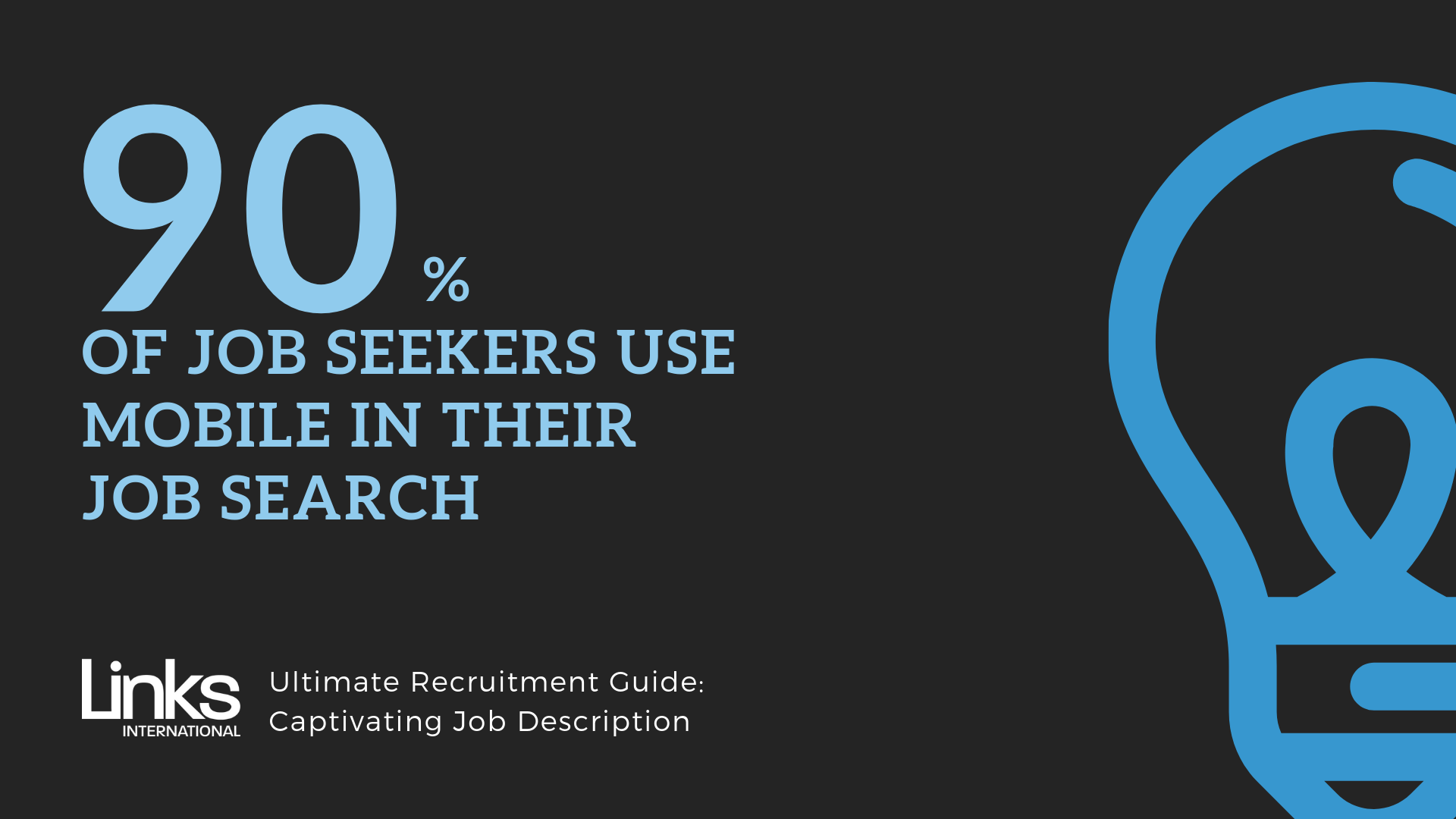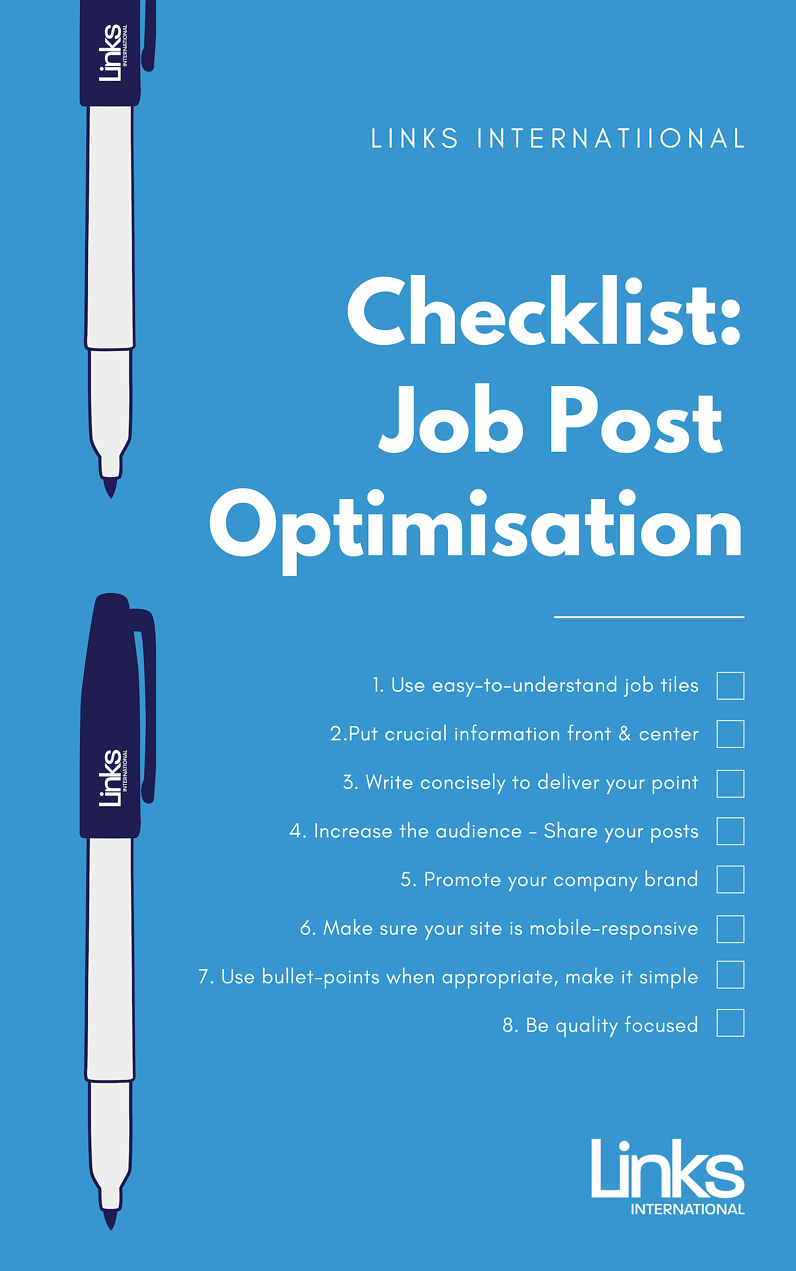Ultimate Recruitment Guide: Captivating Job Descriptions
By Links International | Wednesday, 15 May 2019For majority of 2018 and projected to run into 2019, the Hong Kong and Singapore job market has been highly candidate driven. This, in part, is due to the expanding technologies and demands across various sectors as well as the record low unemployment rates in 2018 for both Hong Kong and Singapore.
With such tight competition for the top talent in the market, the pressure is on for HR teams. To help HR professionals acquire the best talent, Links has put together an Ultimate Recruitment Guide aimed to help HR teams up their game in recruiting the top talent out there. Links’ Ultimate Recruitment Guide will come in the form of multiple blog posts, detailing on various points of the recruitment process.
Kick starting the series, is a guide on how to write effective job descriptions, that can captivate your target audience, the talent you’re looking for.
How to Write an Effective Job Descriptions (JD)
Before we jump into the tips and tricks of how to write an effective and captivating job description, here’s why you should spend time on it in the first place.
As part of our Links’ recruitment services, our professional team of consultants has a practice of re-formatting job descriptions from clients to help them more effectively reach the right talent. Candidates come across job descriptions in one of two ways. Be it through active looking, or through introduction by a recruiter where the job description is provided to them, the job description (JD) is the first formal piece of document informing the candidate of the role.
As such, it is important that the JD does more than just list the basic requirements and job responsibilities so it can more effectively attract the right talent to apply. Below’s some points to keep in mind when putting together your job description for hiring, to help you attract the right candidate we’ve also created a job post optimisation checkliston how to optimise your job post which can be found at the very end of the post.

Jargon & Technical Terminology
While it may be your intention to weed out irrelevant talent with the use of jargon, depending on the seniority of the prospective role, this tactic may not be applicable. This is especially true for job titles, this is the first thing candidates see on a JD, so leave your creative titles for internal use or down in the job description. By using more well-known/ understood titles, you can provide candidates with a clearer picture of the role and an idea of what to expect in terms of job duties.
Show Your Company’s Personality in the Job Description
Now’s a time for your to show your creativity. While it’s not bad to have a bare description of the role and type of candidate you are looking for, a way more effective approach is to introduce the company’s character and why you are looking for who you’re looking. Go ahead and reveal your company’s unique culture and the type of talent who will thrive in such an environment. Among millennials, close to 80% consider how they fit into the company culturebefore taking a job, so don’t lose out on the opportunity here to demonstrate what the company is about.
Listing Job Responsibilities? Trim It
Remember the story behind the app Summly? This was the story that blew up some years ago as the young creator sold the app he created in high school for 30 Million USD. The idea? An app that summarises the news so people can more easily digest the information. Why not apply the same mentality to your JD?
What we often see are companies listing just about every task they can think of and fitting it all into the job responsibilities portion of the JD. While we understand the desire to cover grounds, listing every possible little thing the role might entail is ineffective. With so much information to process, it becomes hard to identify the more important points. Instead, highlight the most essential parts of the role, so candidate can have a more accurate feel of what they will be spending more of their time and energy on.
Job Requirements & Qualifications? Make it Simple
Make it straightforward and simple. Use bullet points to list the job requirements and qualifications, so potential candidates can see at-a-glance what you are looking for and whether their experience fits the bill.
We sometimes still see companies using paragraphs for this which makes it harder to spot. Let candidates know the type of talent you are looking for. This step helps filter and minimise the number of mismatched candidates, helping you come up with a bigger pool of potential talent aligned to your needs.
Additional Tips for Writing a Good JD

All About Access and Efficiency - Going Mobile
In a survey by Glassdoor found that ninety-percent of job seekers use mobile at some point in their job search. According to Undercover Recruiter, 89% of job seekers believe that mobile devices play a critical role in the job hunting process. While job seekers may not apply directly from their mobile device, research agrees that mobile plays a big role in the overall recruitment process, so make sure whichever platform you’re using is ready and mobile-optimised to encourage more potential candidates.
Job Post Search Optimisation Checklist
Crafting an effective job description that reaches and attract the right candidates take a lot of skills. Below, we’ve put together a quick and easy checklist that helps you clean up your JDs so you can reach more effectively the top talent in the market. For more extensive HR and recruitment assistance, contact us now.


 Job Index: Is the Hong Kong Job Market Bouncing Back in March?
Job Index: Is the Hong Kong Job Market Bouncing Back in March?
 2020 Asia Salary and Market Insights
2020 Asia Salary and Market Insights
 Hong Kong jobseekers taking so long to decide that bosses are rescinding job offers
Hong Kong jobseekers taking so long to decide that bosses are rescinding job offers